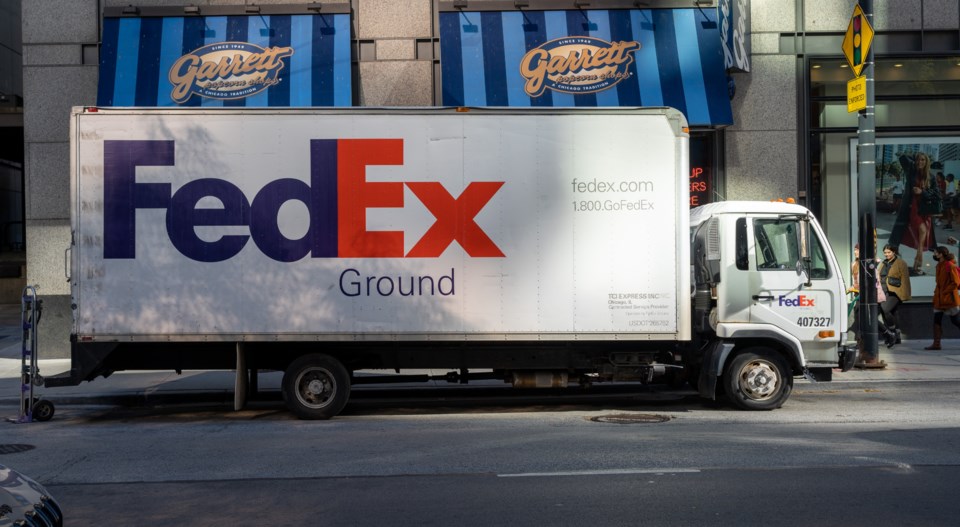Goods flow through Barrie at a busy pace.
“When you look at Barrie and broader Simcoe County, and the multi-modes of transportation to move goods, Barrie is a transportation hub,” said Stephannie Schlichter, the City of Barrie’s director of economic and creative development.
She said reviewing the city’s business and employment data survey information, Statistics Canada identifies 205 businesses operating in the transportation and warehousing sector in Barrie and area, with approximately 129 of them in the truck transportation sub-sector.
And Barrie’s location is certainly a large factor.
“The site was chosen because of its ease of access to major highways, proximity to customers' distribution centres and a strong local community workforce for recruiting employees,” said Dana Hardek of FedEx Ground, which opened a 180,000-square-foot distribution centre on Big Bay Point Road last fall that employs a mix of full- and part-time workers.
“The company also contracts for package pickup and delivery services with service provider businesses that hire locally for driver, helper, manager and other positions," Hardek added.
The Stats Canada numbers are from its Canadian business counts with employees, from June 2022. Note the geographic region is the Barrie census metropolitan area (CMA) that includes Innisfil and Springwater Township.
Just more than half of those 205 businesses employ between one and four individuals.
Large courier and transportation services companies operating in the city, identified through the business and employment data survey, include Canada Post, Canpar, Larway Transportation, Chantler Transport, and Muskoka Delivery Service, among many others, Schlichter said.
“We are also home to companies that support the sector, including customs brokerage and freight forwarding services such as North American Freight Forwarding and Near North Customs Brokers,” she said.
Purolator, located on Bayview Drive, provides service to not only Barrie, but Bradford, Sharon, Alliston, Nobleton, Tottenham, Midland, Orillia, Collingwood and Wasaga Beach, among others. This is a mix of business-to-business and business-to-consumer volume. The Barrie terminal also has a fleet dedicated to freight operations, or less than a truckload, serving the same areas.
“We expect this growth to continue, given the movement of families out of Toronto into the many communities within our service areas,” said Purolator district manager Landon Morris.
Schlichter said the city doesn’t have specific data on what’s shipped and its destinations.
“However, anecdotally, when you look at Barrie’s business industry composition, we would see raw materials and component materials being shipped in and finished goods or goods in progress being shipped out,” she said, “from automation equipment and machinery, through to parts and products – both plastic and metal that serve a wide range of industry from automotive, to medical to nuclear.
“Because these businesses are globally connected, cargo is being shipped across North America and around the globe, including Europe, Asia and South America,” Schlichter added. “From a consumer goods perspective, Barrie is a centrally located urban centre with the transportation corridors via highway connections that makes it a natural ‘last-mile’ distribution area.”
Barrie is a transportation hub three main ways, she noted.
By road, there’s access to Highway 400 and other major arterial roadways, which facilitates transportation across Canada and to American markets.
By air, Lake Simcoe Regional Airport is a 20-minute drive away, and operates with Canada Customs. Proximity to Pearson International Airport is also an advantage.
And by rail, there’s short-line service available through Barrie-Collingwood Railway, with a link to the Canadian Pacific Railway (CPR) inter-modal terminal in Vaughan and to the Canadian National Railway (CNR) international terminal in Brampton.
“Barrie’s proximity to the Toronto, international border crossings, and more northern destinations such as Muskoka (also makes it a transport hub),” Schlichter said. “Further, our projected population growth, both within the city and broader county, will only increase demand for the movement of goods.”
Stats Canada says Barrie’s 2021 population was 147,829. Barrie is projected to grow to a population of 210,000 by 2031, to 253,000 by 2041.



